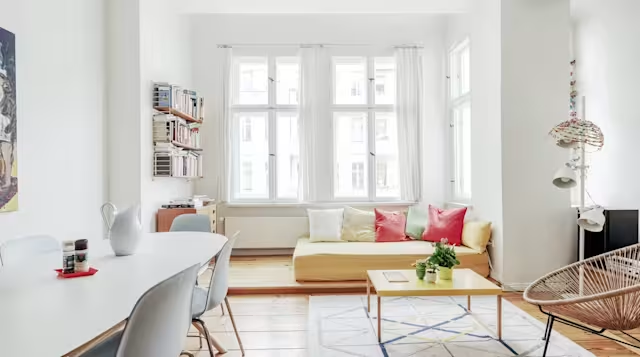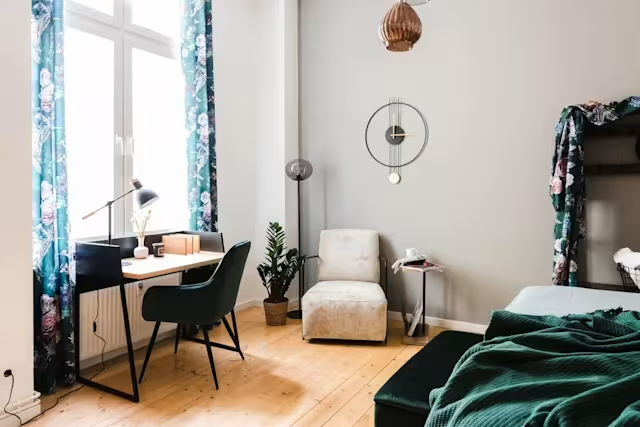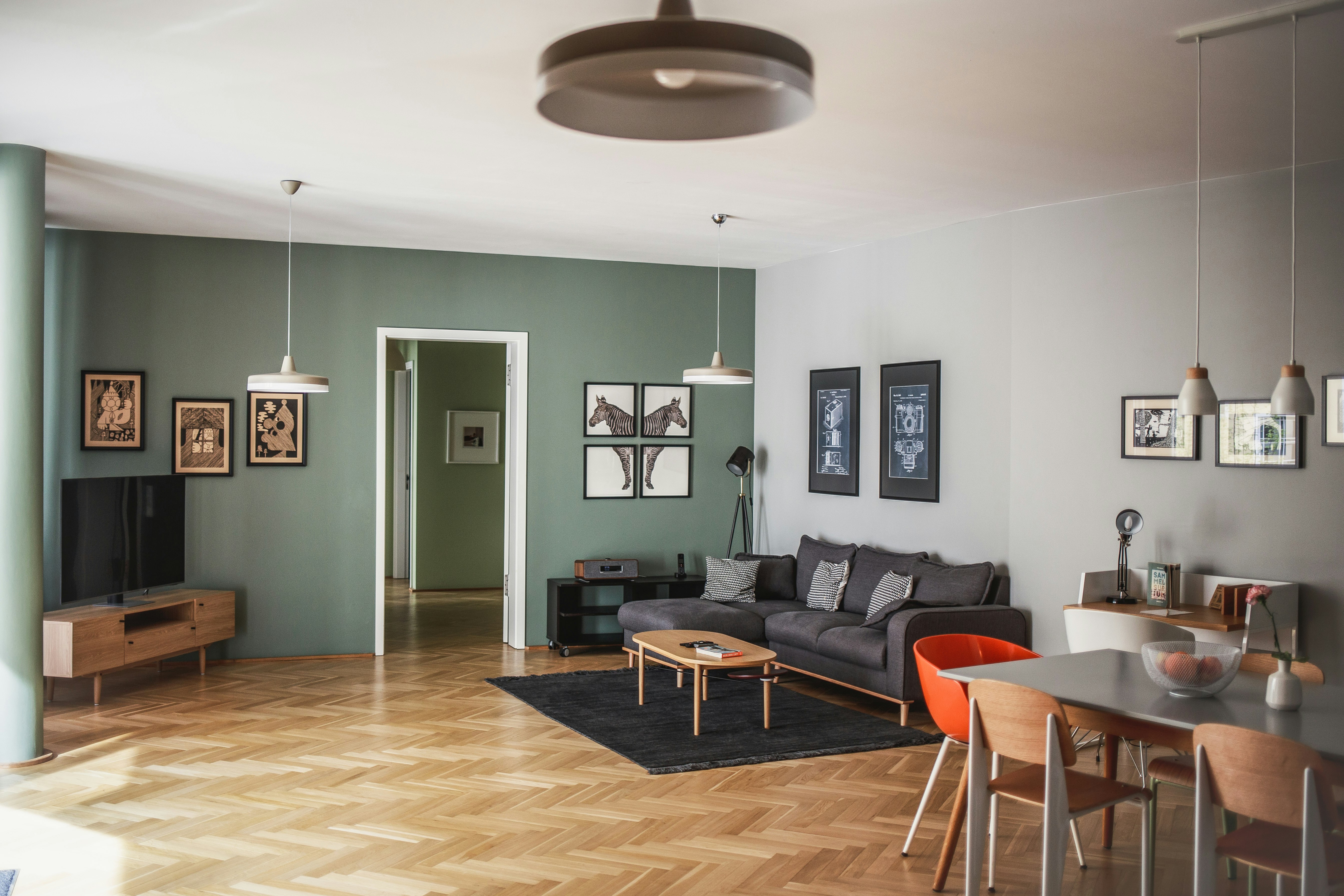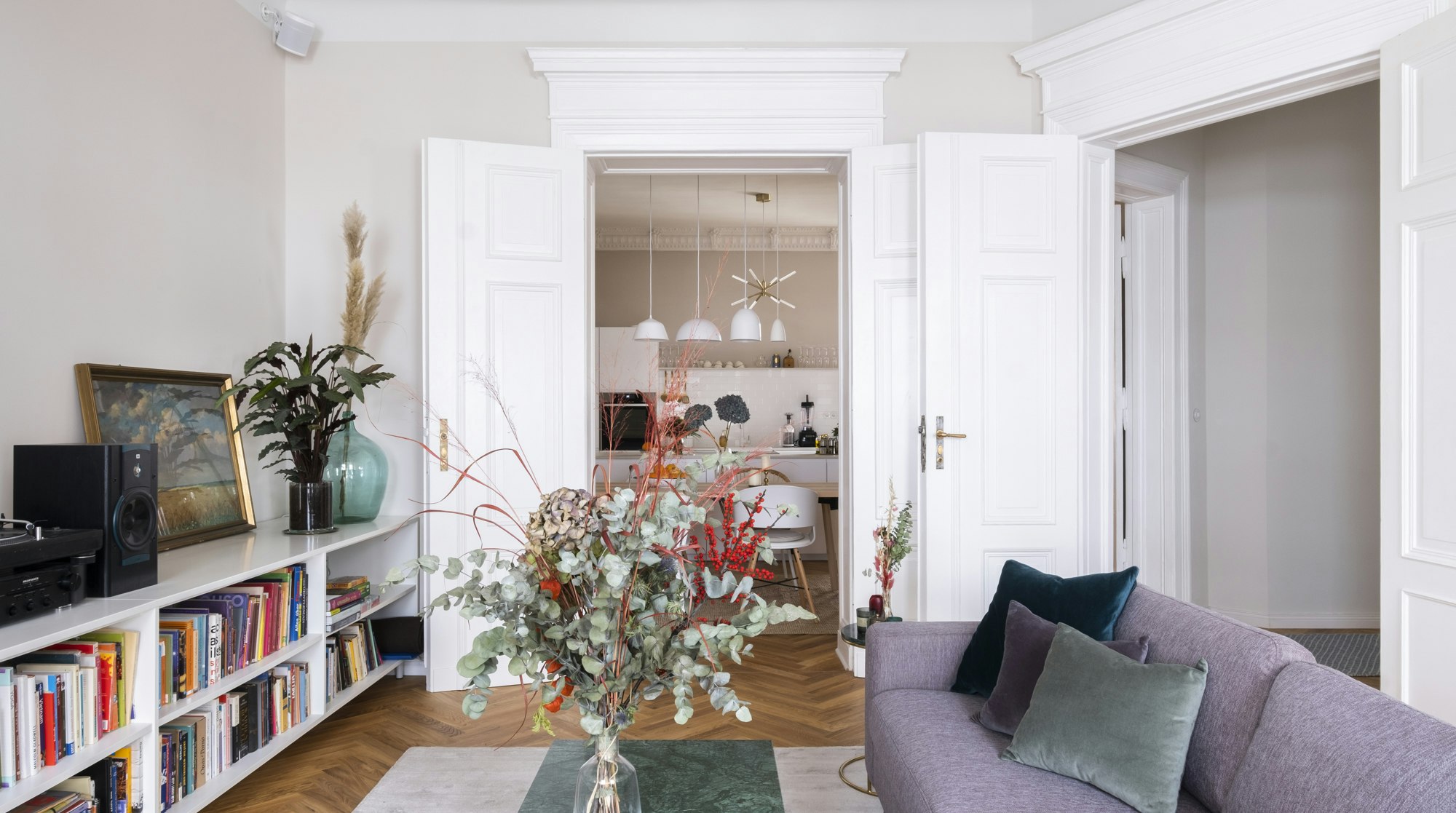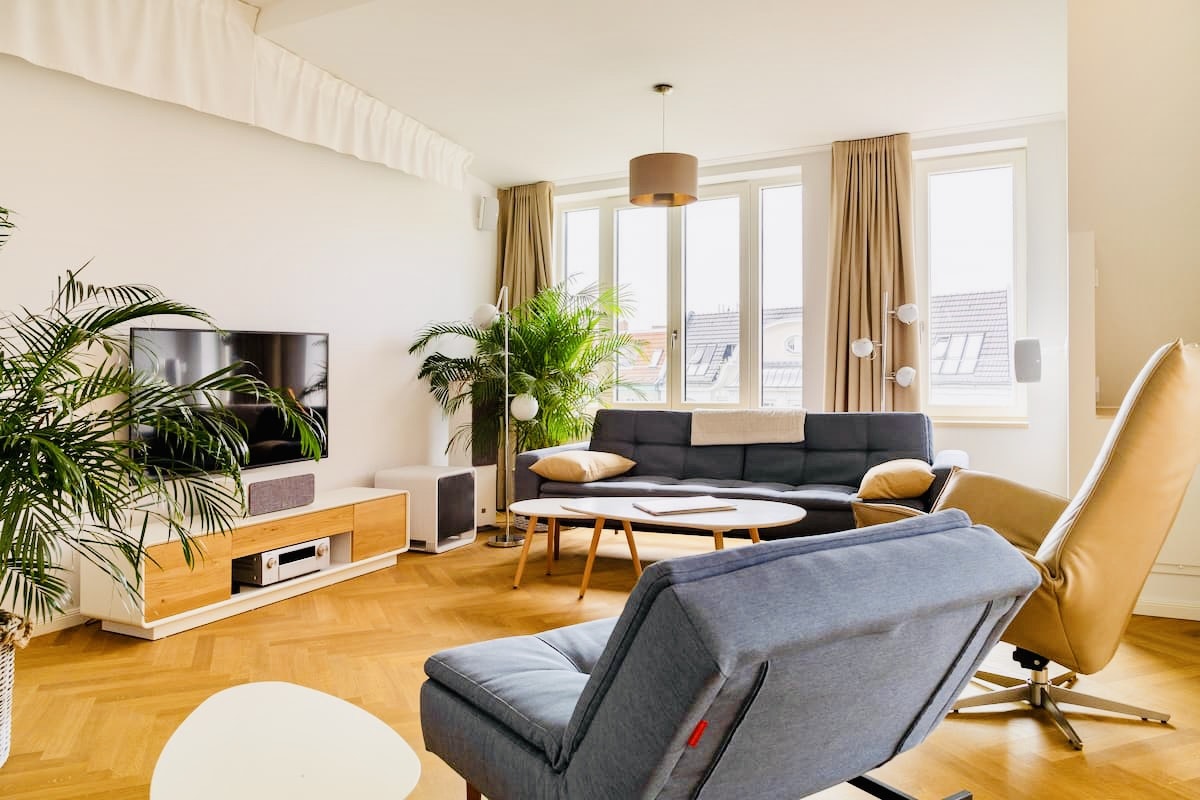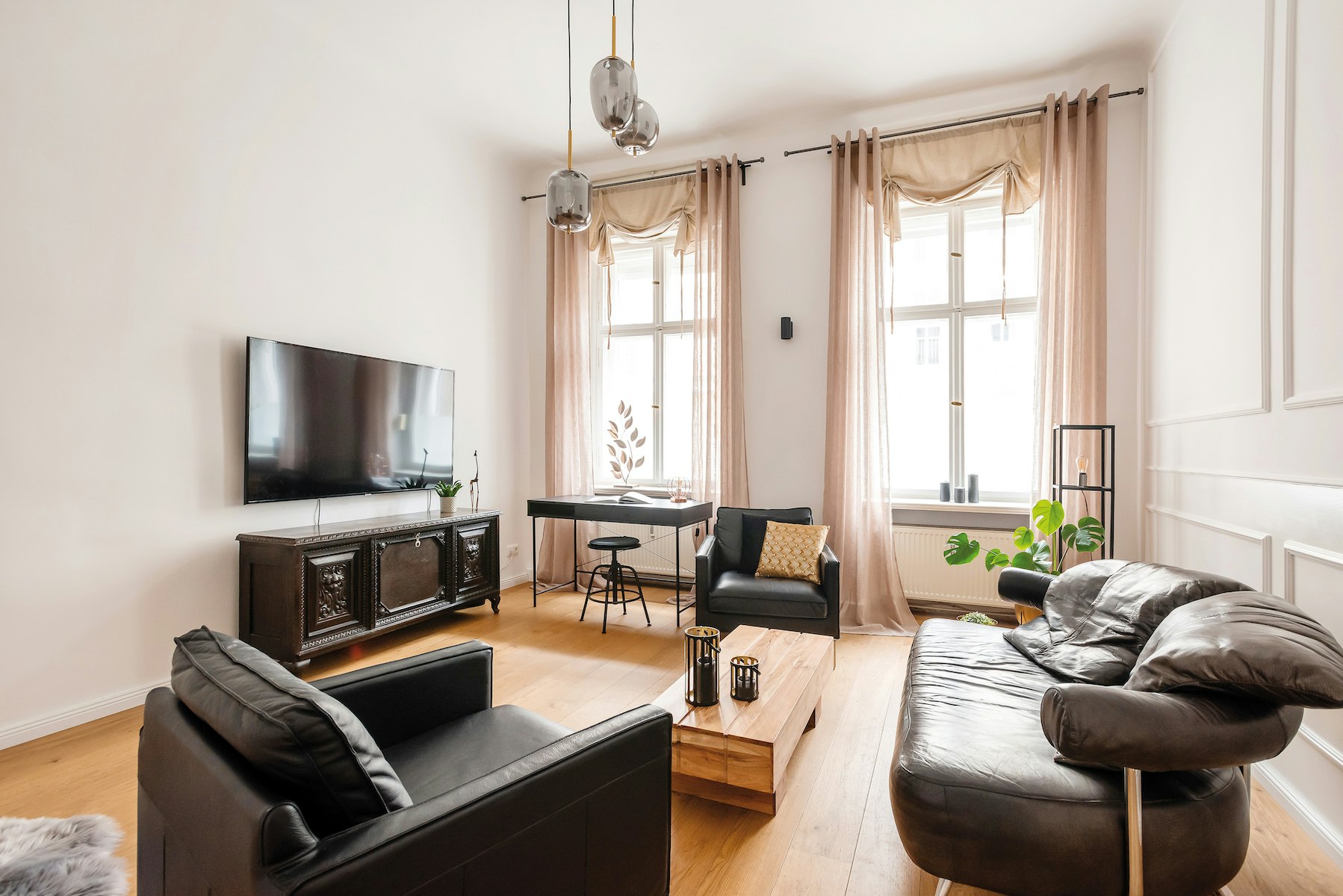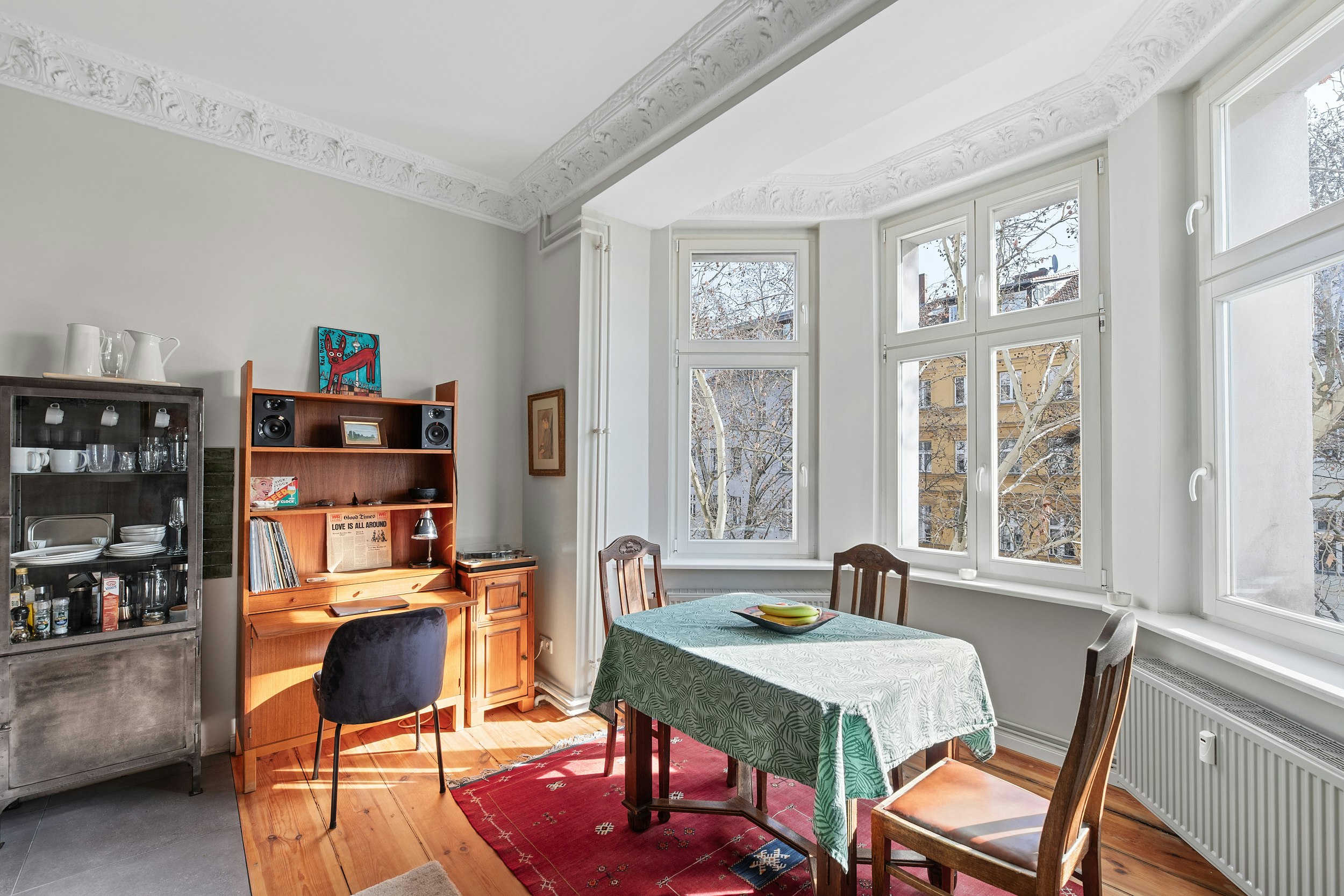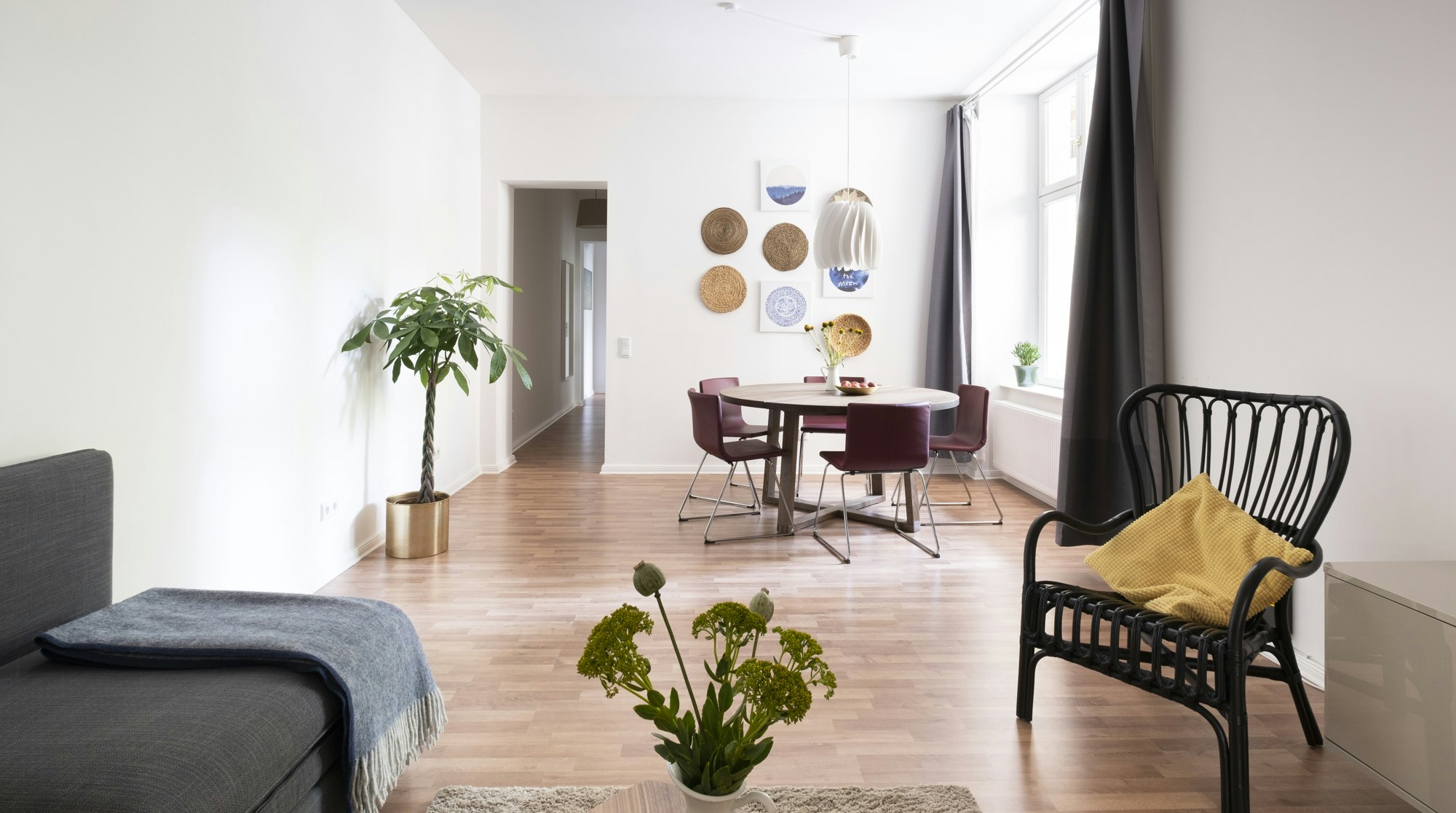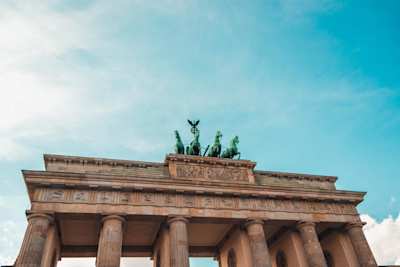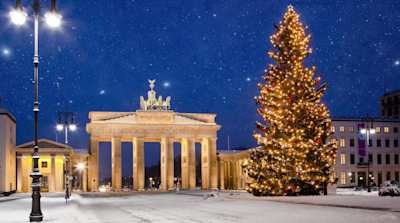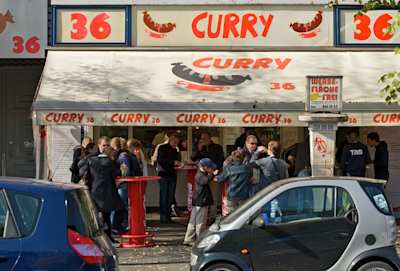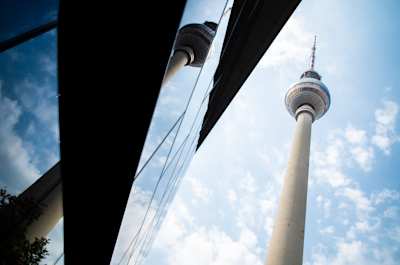Find Culture, Art, History and Food in Berlin’s Safest Neighbourhoods
From romantic, leafy neighbourhoods to artsy, creative districts, Germany’s capital leaves a mark on everyone who visits
~
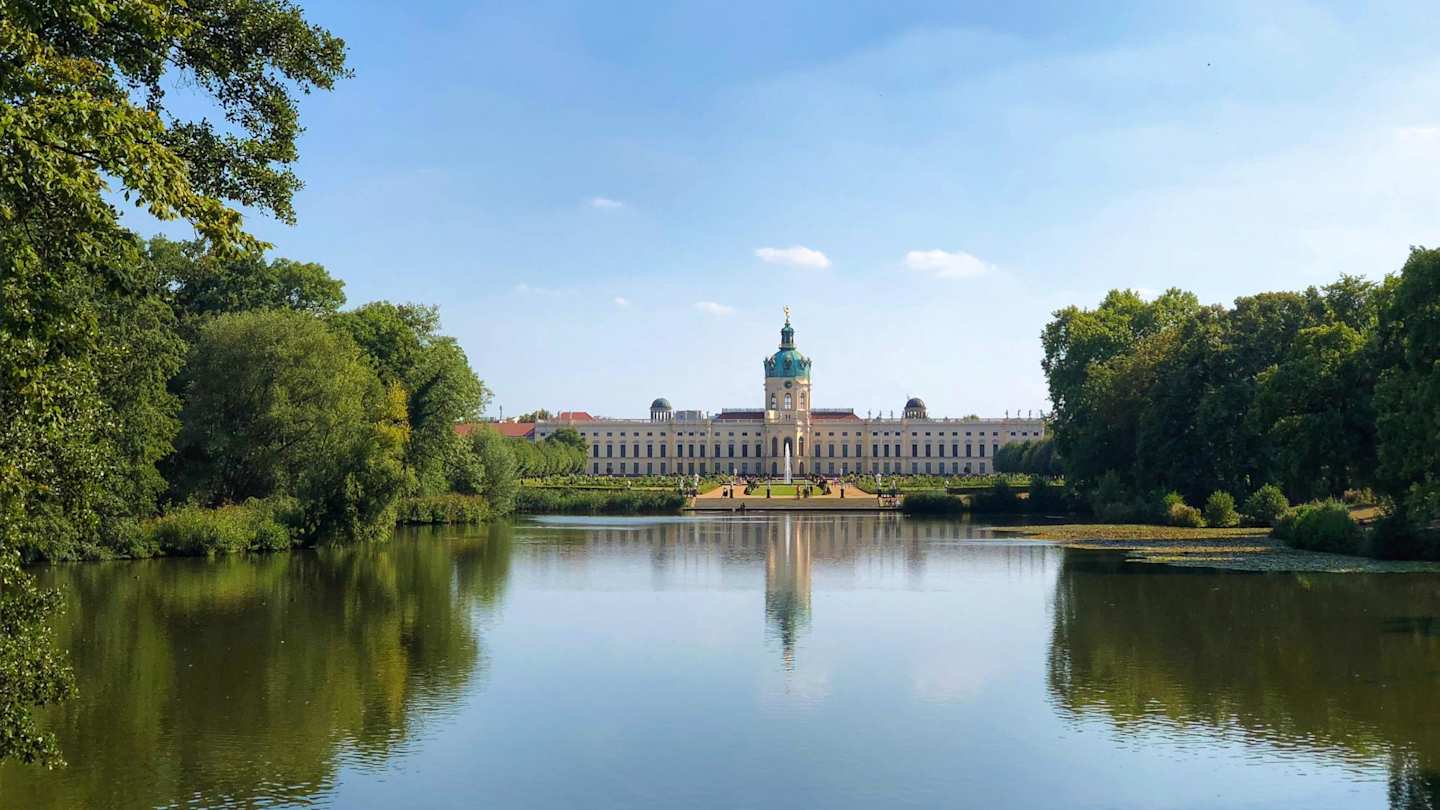
There's nowhere quite like Berlin. Arguably one of the coolest and trendiest cities in the world, it's a place where profound history meets vibrant culture. As well as balancing old and new, it balances being edgy and gritty as well as majestic and regal. It may have a reputation for its 24/7 nightlife, but you'll be pleased to know that overall, Berlin is a very safe city. That said, some places are better than others, and to help you make the most of Berlin's sights and attractions, our travel experts at Plum Guide have put together this guide to the safest areas in Berlin.
Reinickendorf
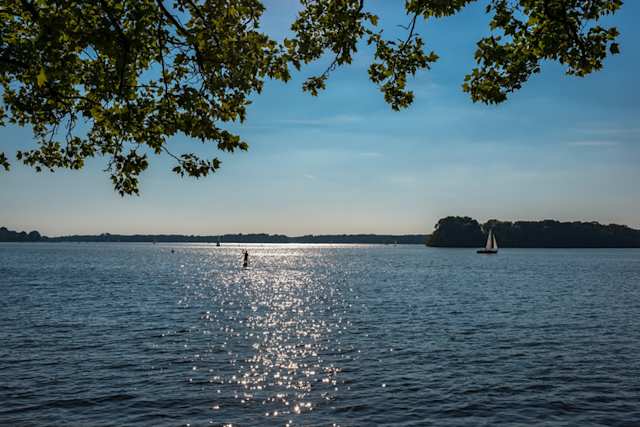
The Tegeler See lake in Berlin
Located in the northwest of the city, Reinickendorf is a peaceful residential area. As you look around at the abundance of greenery and natural spots, it's hard to believe you're still in a major world city. One-third of Reinickendorf consists of forests, parks and meadows. Spend your days in Tegel's large forest and the sprawling Tegeler See lake, soaking in the views on a river cruise boat, lazing on lakeside beaches, or enjoying a drink in the sun at the harbour.
Reinickendorf is also an attractive destination for architecture buffs, where you can discover 19th-century manor houses, heritage-protected Modernist estates and historic villages. Be sure to tour the rooms of the Renaissance-era Schloss Tegel, once the home of natural scientist Alexander von Humboldt. Berlin is full of surprises, and one of its best is hidden here in Reinickendorf. The Buddhistisches Haus is the oldest Buddhist temple in Europe, a secluded place of spirituality. As you step in the gate, climb the seventy-three steps and eight platforms, symbolising Buddha's eightfold path to enlightenment. At the top of the stairs sits a house with a library, temple and zen garden.
Spandau
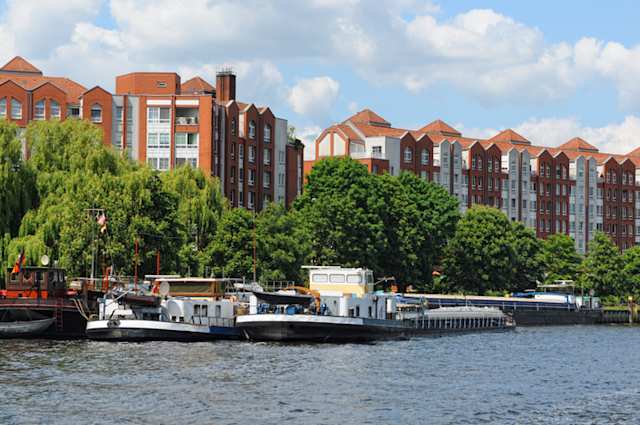
Barges on the Havel river in Spandau, Berlin
Separated from the rest of Berlin by the Havel River, Spandau is one of the most charming and safest areas in Berlin. It's a tranquil, green neighbourhood known for its waterways and meadows, and your time here will most likely be spent outdoors. Spandau's forests are ideal for hiking or cycling, and its glittering lakes beckon swimmers and canoeists. For a city, the water quality is surprisingly excellent, and you'll spot many families gathering on the river beaches on hot days (the shore of the Pichelswerder peninsula is a particularly scenic spot).
Soak up the sights in Spandau's charming old town of cobblestone streets and historic buildings. It dates back to the 13th century when it was founded as a medieval fortress town. The Spandau Citadel is one of Berlin's oldest buildings, and during the summer months, it transforms into an open-air concert hall. When you've finished exploring, browse the independent shops and enjoy traditional German fare at the many restaurants.
Moabit
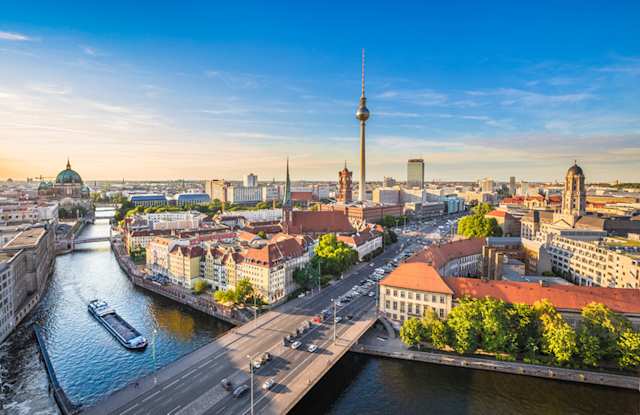
Berlin skyline with Spree river at sunset
Mitte (literally translating to 'centre') is Berlin's beating heart. Yes, it's touristy, but if you stay in the neighbourhood of Moabit, it doesn't feel like you're in the city at all. Technically an island, Moabit is bordered by leafy canals and the Spree River. Home to a mixture of immigrants, students, artists and middle-class families, it's a vibrant area with endless things to do. If you're a gourmand, Moabit is a paradise with everything from Arabic bakeries and Turkish produce shops to Michelin-recommended restaurants and the Arminius Markthalle with its street food and arts and crafts.
Berlin has an excellent transport network, and Moabit is no exception, allowing you to quickly get to Mitte's main attractions like the Brandenburg Gate, Tiergarten and Museuminsel, a collection of some of the city's most fascinating museums. Housed in a former factory, Kulturfabrik is a cultural centre that hosts theatre, concerts, independent films and more. Those travelling with kids can head to Fritz-Schloss-Park, an excellent place for a picnic and to let off some steam using the sports equipment.
Pankow and Prenzlauer Berg

White and red historic building with trees in front, found in Prenzlauer Berg, Berlin, Germany
A primarily residential area, Pankow is a popular place for young families and professionals to live in. The Prenzlauer Berg area of Pankow is a beautiful place to base yourself. It's also generally regarded as one of the prettiest areas of Berlin, with many of its tree-lined boulevards and old buildings still intact after the war. Prenzlauer Berg is creative and cosmopolitan, evident from the many eateries around Helmholtzplatz and Kollwitzplatz and the independent boutiques and shops dotted around. For designer fashion, shop 'til your heart's content along Oderberger Straße and Kastanienallee Boulevard.
To dive into the city's history and culture, Prenzlauer Berg is home to several places worth adding to your itinerary, namely the Jewish cemetery, the Berlin Wall Memorial and Kulturbrauerei, a former brewery turned into a space featuring cultural events, bars, cafés, markets, cinema and a nightclub. In addition, many travellers with kids stay in Prenzlauer Berg as there are plenty of kid-friendly attractions to keep the little ones entertained, like organic ice cream shops, kinder cafes (children's cafes) and playgrounds.
Charlottenburg-Wilmersdorf
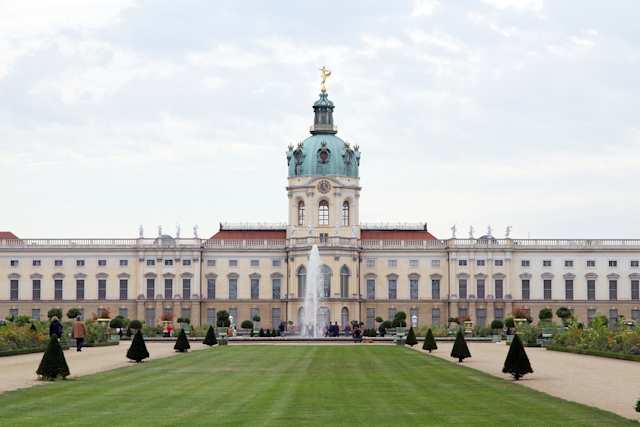
Charlottenburg Palace, Berlin
The upmarket district of Charlottenburg-Wilmersdorf is up there with Berlin's most beautiful places to stay. It also happens to be one of the safest areas in Berlin, attracting families and culture vultures. Grandiose, aristocratic buildings are a prominent feature here, with the creme de la crop being the magnificent Schloss Charlottenburg. Unfortunately, the palace isn't a Plum Guide home, but you can still tour the palace and be dazzled by the lavish rooms and impressive collection of artwork.
If you want to splash out, staying in the Grunewald area of Charlottenburg is a must. Easily the most luxurious part of Berlin, you'll come across mansions built in Art Nouveau, English Tudor and Wilhelminian styles. Once a refuge for the rich during the early 20th century, the Grunewald Forest now offers something for everyone. Swim in the tranquil cove of Kuhhorn Badestrand, jog around the Schlachtensee lake or catch incredible views from the artificial hill of Teufelsberg, the highest point of elevation in Berlin at 120 metres. At its summit is an abandoned US radar tower once used as a listening station during the Cold War.
Steglitz-Zehlendorf
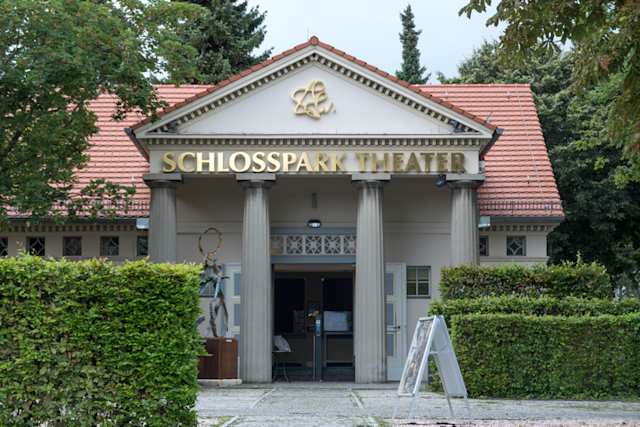
The Schlosspark Theatre in Berlin
The upscale Steglitz-Zehlendorf is another lovely place to stay in Berlin. It's perfect for nature lovers who can get outdoors in the wooded countryside and Wannsee Lake. Even when it's raining, you can still enjoy nature at the botanical gardens, a wonderful shelter from the elements. There are over 20,000 plant species here, and the greenhouses even play host to concerts and events throughout the year. Travelling with your significant other and want to plan something romantic? Pfaueninsel, or Peacock Island, is the ultimate day out. Once the love nest of Friedrich Wilhelm II, the little island is home to peacocks strutting around the grassy meadows.
Those keen to get acquainted with the culture have several exciting options: the Schlosspark Theatre with its fabulous calendar of shows; Domäne Dahlem, a manor house and agricultural museum with a range of exciting exhibitions and interactive activities; and Haus am Waldsee, an idyllic country cottage and one of Berlin's leading contemporary art galleries. If Expressionism is more your cup of tea, pop by the Liebermann Museum on the shores of Wannsee, once the summer residence of German Expressionist artist Max Liebermann.
Friedrichshain

The Oberbaum Bridge crosses the River Spree in Friedrichshain, Berlin, Germany
For artsy folk and those who enjoy a good night out, Friedrichshain is classic Berlin with its punky, alternative vibe. Once a working-class, industrial area during the GDR, it's now one of the trendiest places in Berlin, with large numbers of creatives and young families calling it home. It's where you'll find East Side Gallery, Berlin's most historical landmarks and the world's largest open-air mural gallery. At 1.3 kilometres long, this is the longest continuous section of the original Berlin Wall and is a must-visit while in Friedrichshain. Around this area is the picturesque Oberbaumbrücke bridge, which spans the River Spree and connects Friedrichshain with Kreuzberg, once divided by the Berlin Wall.
One of the coolest hangouts in Friedrichshain is Boxhagener Kiez. Although gentrification has somewhat taken hold, it still offers a glimpse of what it looked like during its punk years. This is where you'll find colourful buildings, independent shops and boutiques, cosy cafes, bars and restaurants. A stay in Friedrichshain means you'll never be too far from Berlin's most renowned museums, such as the Berlinische Galerie – showing art from 1870 to the present day – the Gropius-Bau arts venue, the Jewish Museum and the Deutsche Technikmuseum (German Museum of Technology).

